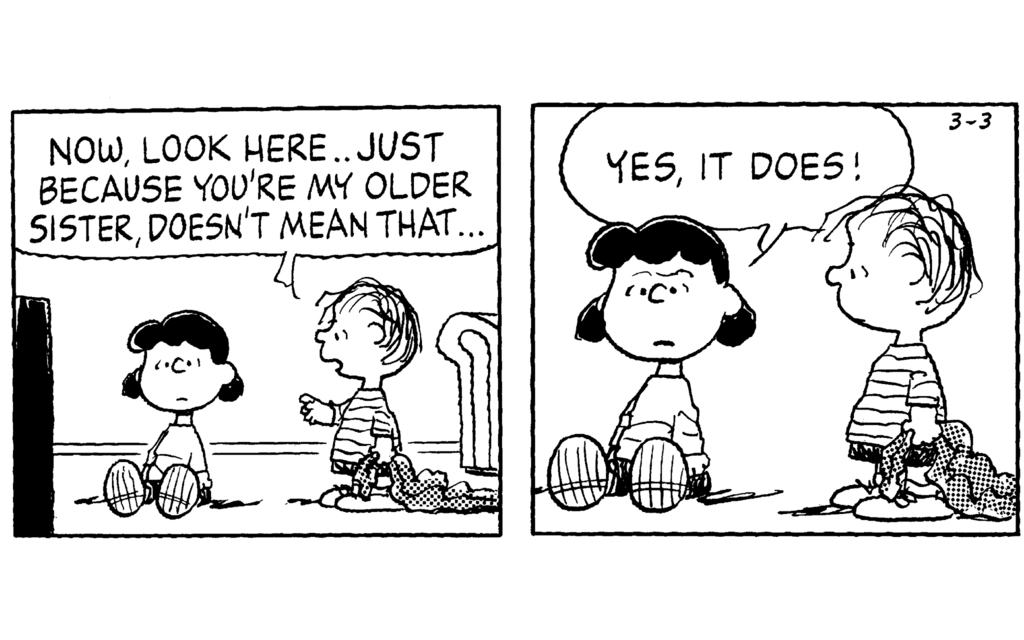Peanuts by Charles Schulz for December 11, 1952
Transcript:
Linus sits at a distance from the t.v., watching it in the living-room.<BR><BR> Lucy walks in, picks him up, and says, "You can't watch television from way back here, Linus...move up where you can see...."<BR><BR> Linus sits right in front of the t.v. screen.<BR><BR> He turns to the reader with dazed unfocused eyes.<BR><BR>












This references the belief that sitting too close to the television-set or movie screen causes eye-damage. This belief started 1n the late 1800s because people were afraid of these new-fangled movie-things. I shall break-down this into the 3 realms of 2D-Movie-Screens, television, and 3D-Movies:
Fear of movies caused people to sit in the last row. This fear is unjustified. The best seat is the frontrowcenter. Sitting in the frontrowcenter is totally submersive. It is like being in the movie.
With early television, this belief was right for the wrong reason:
Early televisions generated X-Rays. The manufacturers knew this, but decided to neither inform the public, nor eliminate the X-Rays. It was cheaper to do nothing. The truth leaked out. This forced manufacturers to eliminate the X-Rays. Television-Sets manufactured after 1970 generate very few X-Rays.
Now-a-days, people fear 3D. It is true that if 1 eye is weaker than the other, trying to focus both eyes on the screen for the 3D-effect causes eye-strain, whic can lead to headaches and nausea, but one should keep 2 things in mind:
Only 10%-20% of the population report such problems.When these effects occur, they are temporary. They usually resolve within an hour after leaving the theater. One does not experience any damage. from 3D-movies.The best place to sit in a 3D-movie is the frontrowcenter. Sitting in the frontrowcenter of a 3D-movie is like being in the world of the movie.
In conclusion, sitting next to the screen does not hurt one’s eyes.